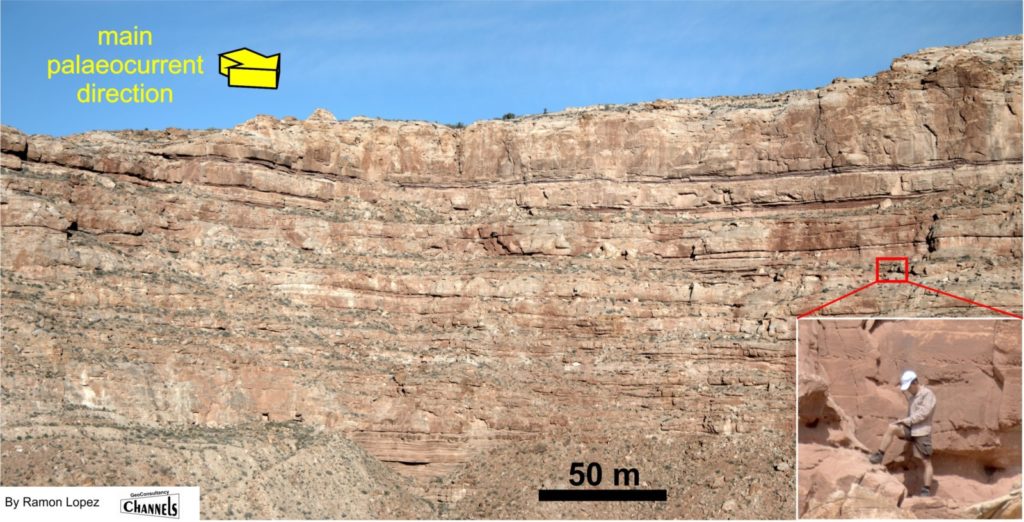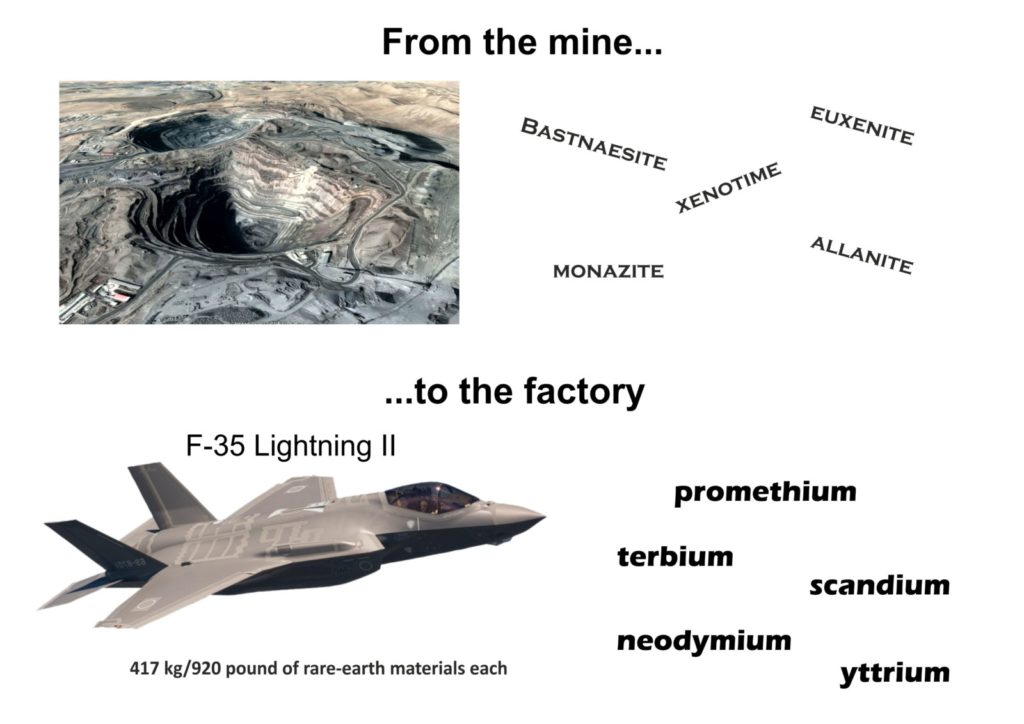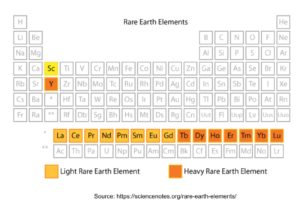Russia has invaded Ukraine. We have been reading and watching in the news how some pieces of high-tech equipment and weapons are being determinant for Ukraine to push back Russia’s invasion. Guided missiles, drones or new generation satellites heavily relie on rare-earth elements for development and production. The aggressor and the invaded country crave for weapons and military equipment to wage war on each other. Lethal and efficient weapons are about having high-qualified engineers and…minerals. Minerals from which many critical chemical elements can be extracted; and many of these critical minerals are found in sedimentary ore deposits.
Today, much of the high-tech components involve Rare Earth Elements (REEs), a group of 17 metal elements that are key components of many military systems, like lasers, precision-guided weapons, magnets for motors or optical devices. But there is another chemical element necessary to make the most destructive weapon, the atomic bomb, which is still used by some country leaders to stir up fear and menace other countries: uranium. Before going into REEs and their connection to state-of-the-art military equipment, let’s first talk about those outcrops of ancient fluvial systems which provided uranium for the first atomic bombs.
The well-known Manhattan Project used Uranium from sedimentary deposits located in Colorado, around the location of Grand Junction. I had the opportunity of visiting the Museums of Western Colorado where I first learned about this piece of amazing history (see: www.museumofwesternco.com/virtual-exhibits/uranium-boom-in-grand-junction/). I was working on several outcrops of ancient fluvial systems around Grand Junction but I did not know they hold that much radioactive elements! The Colorado uranium was used to create the infamous two atomic bombs dropped into Japan at the end of the World War II. One of the areas where Uranium is still be mined, in southeast Utah, is one of the best exposed outcrops of ancient fluvial deposits I have ever seen (see an overview of the outcrop in Figure 1).

Figure 1. The Salt Wash Formation has been interpreted as the preserved deposits from a distributary fluvial system. Some of its sandstone beds bear relatively high uranium concentrations (read more about the fluvial interpretations here: https://pubs.geoscienceworld.org/sepm/jsedres/article-abstract/85/5/544/145482/Quantification-of-a-Distributive-Fluvial-System).
The Uranium has mostly been found in the lowermost sandstone beds of the Salt Wash Member of the Jurassic age Morrison Formation. I was told that it is concentrated in millimeter-to-centimeter-thick layers of sandstone (read further details here: www.osti.gov/servlets/purl/6512174). The mineralization primarily consists of coffinite, with minor uraninite, which usually occurs in association with vanadium. During my visit to the area I could walk around the mining facilities of a company which have been tapping Uranium in this area.
Thankfully, atomic weapons are not being used, but others, extraordinarily lethal, depend on the availability to the so-called Rare Earth Elements (REEs). This group of chemical elements are typically dispersed and not often found concentrated in economically exploitable ore deposits.
The ‘rare’ adjective is about them being dispersed but not because of a relatively scarcity in the Earth. REEs consist of a list of seventeen chemical elements, specifically the fifteen lanthanides, as well as scandium and yttrium (see Figure 2).
Scandium and yttrium are considered REEs because they tend to occur in the same type ore deposits as the lanthanides and have similar chemical properties. Next-generation equipment and weapons in the military depend on the access to REEs as raw materials. For example, each 5th Generation F-35 Lightning II aircraft requires 417 kg/920 pound of rare-earth materials (Figure 3).

Figure 3. From the mine to the Arms industry. Minerals like monazite can be found in sedimentary ore deposits. Rare Earth Elements and other critical elements are extracted from monazite and other minerals. Yttrium, neodymium and other REEs are necesary to make the most advanced devices for military equipment and weapons. The F-35 Lightning II is a good example.
This is one of the most lethal aircraft, of not the most, currently in production. For any other type of combat vehicle, REEs are critical for manufacturing laser targeting and weapons. Some of the beneficial characteristic of certain REEs result in the production of the best batteries in terms of greater energy density, better discharge characteristics or fewer environmental problems upon disposal. Others, allow the manufacture of miniaturized higher-strength magnets or fiber-optic cables that can transmit signals over long distances because the signal amplifies to a comparatively greater magnitude. You can read about how critical the supply chain for rare-earth elements has become in the military sector over the past few years here: https://www.airforcemag.com/article/rare-elements-of-security.
So, do we find REE’s in sedimentary ore deposits? Yes. In different types: salt deposits (watch: https://youtu.be/Lit5PY2Rd2s), in placer deposits of marine sands (https://www.sciencedirect.com/topics/earth-and-planetary-sciences/monazite-sand), in volcano-sedimentary deposits (https://www.sciencedirect.com/science/article/pii/S1674987115001310) and in seafloor sediments (https://www.nature.com/articles/d41586-019-02242-y). But, we should not just care about REEs. The list of critical elements necessary for the manufacture of many other military equipment, apart from REEs, is even larger: aluminum (bauxite), antimony, arsenic, barite, beryllium, bismuth, cesium, chromium, cobalt, fluorspar, gallium, germanium and many others (see: https://www.energy.gov/sites/prod/files/2021/01/f82/DOE%20Critical%20Minerals%20and%20Materials%20Strategy_0.pdf). For example, antimony is key for the manufacture of armor piercing bullets, night vision goggles, infrared sensors, precision optics, laser sighting, explosive formulations, hardened lead for bullets and shrapnel, ammunition primers, tracer ammunition, flares, military clothing, and communication equipment.
The connection between the military and sedimentology is close, indeed too close in modern times. The battle really starts before any bullet or missile is in the air: it starts by mining.

